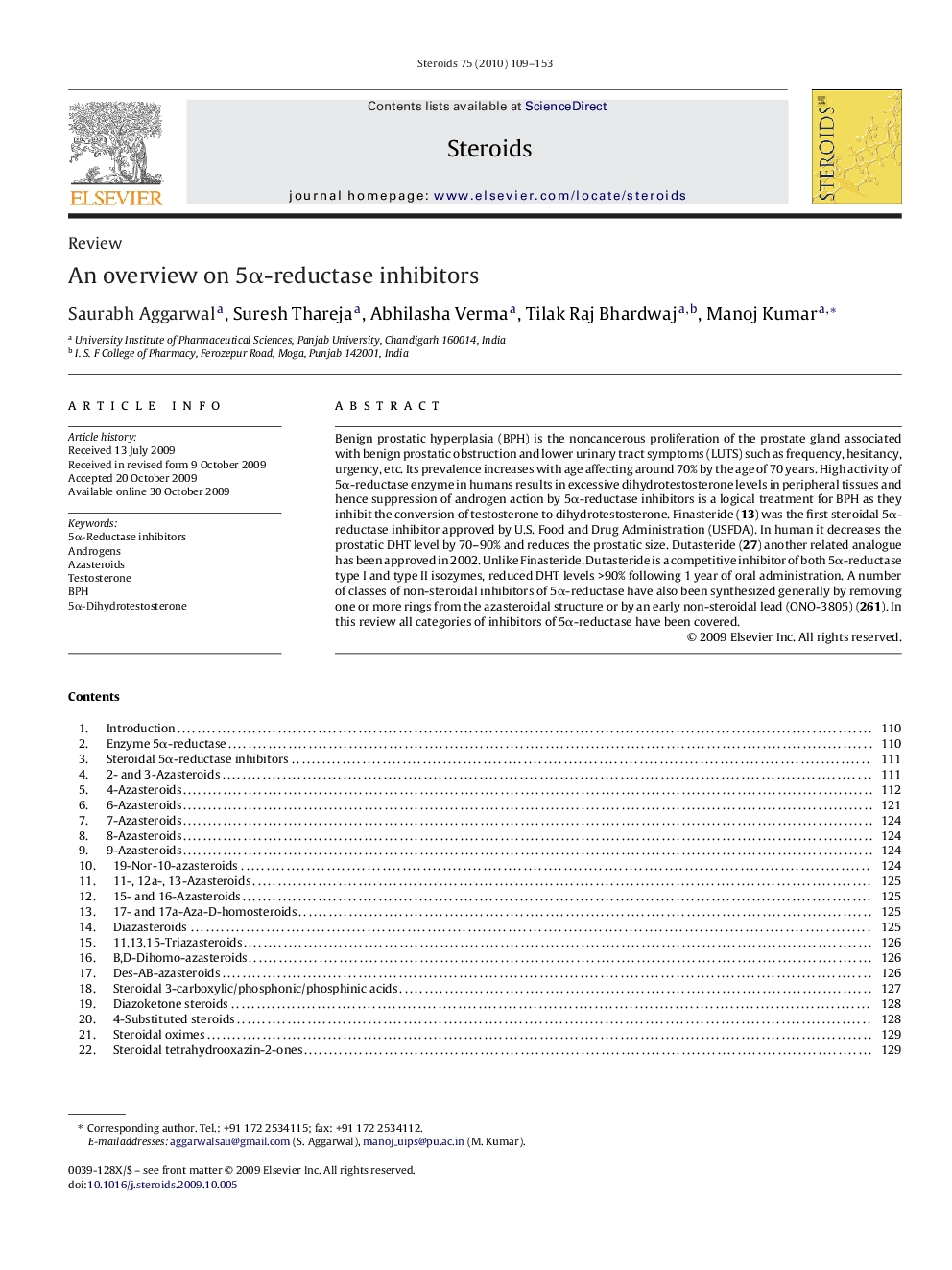| Article ID | Journal | Published Year | Pages | File Type |
|---|---|---|---|---|
| 2028367 | Steroids | 2010 | 45 Pages |
Abstract
Benign prostatic hyperplasia (BPH) is the noncancerous proliferation of the prostate gland associated with benign prostatic obstruction and lower urinary tract symptoms (LUTS) such as frequency, hesitancy, urgency, etc. Its prevalence increases with age affecting around 70% by the age of 70 years. High activity of 5α-reductase enzyme in humans results in excessive dihydrotestosterone levels in peripheral tissues and hence suppression of androgen action by 5α-reductase inhibitors is a logical treatment for BPH as they inhibit the conversion of testosterone to dihydrotestosterone. Finasteride (13) was the first steroidal 5α-reductase inhibitor approved by U.S. Food and Drug Administration (USFDA). In human it decreases the prostatic DHT level by 70-90% and reduces the prostatic size. Dutasteride (27) another related analogue has been approved in 2002. Unlike Finasteride, Dutasteride is a competitive inhibitor of both 5α-reductase type I and type II isozymes, reduced DHT levels >90% following 1 year of oral administration. A number of classes of non-steroidal inhibitors of 5α-reductase have also been synthesized generally by removing one or more rings from the azasteroidal structure or by an early non-steroidal lead (ONO-3805) (261). In this review all categories of inhibitors of 5α-reductase have been covered.
Related Topics
Life Sciences
Biochemistry, Genetics and Molecular Biology
Biochemistry
Authors
Saurabh Aggarwal, Suresh Thareja, Abhilasha Verma, Tilak Raj Bhardwaj, Manoj Kumar,
